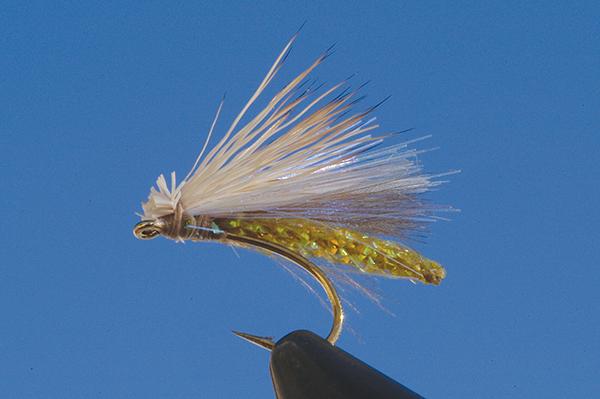The X-Factor
Spring in Bozeman is an amazing time for numerous reasons—the fields turn green, the bears awaken, and the temperatures warm—but for the fly fisher, it means the long-awaited thaw of snow and ice. A critical period between the white flakes of winter and the torrential, infamous runoff is a truly unbelievable hatch known as the Mother's Day Caddis Hatch. This happens sometime between late April and early May, between early spring’s freezing temperatures and early summer’s muddy water.
This hatch is the culmination of warming air and water temperatures, when a small larva crawls from its shell of deliberation and chaotically darts to the surface of the rivers with impeccable speed. At the surface, it spends a few seconds suspended in the surface film. Trout, wary from winter’s clear cold sunny skies, transform into ravenous opportunists. It seems to many yearlong fishermen that every trout in the stream is up, eating the caddis, which eventually hop atop the river like tiny tan and orange pixies. But sometimes, to many anglers’ dismay, the trout will not eat their high-floating Elk Hair caddis patterns, no matter what size or color is tied to their 5x tippet.
This fly is the solution. Often the trout eat the emerging caddis, rather than the free-flying adults so eager to mate and die.
Materials
Hook: Dai-Riki 125 size #10-18
Thread: Uni-Thread 6/0: brown, tan, olive.
Body: Hareline’s Pearl Core Braid: tan, root beer, olive
Under-wing: Natural cul-de-canard
Mid-wing: Angel Hair
Over-wing: Elk Hair
Instructions
1. To begin, use a light wire hook, such as Dai-Riki’s 125. This hook is curved slightly, and gives the fly a natural appearance.
2. Take a chunk of Pearl Core Braid, snub the end with a lighter and squeeze it.This gives the cylindrical material a tapered look.Tie this in near the bend of the shank so that it extends up off the shank.
3. Now tie in four CDC feathers. I prefer the natural color rather than the many dyed or bleached versions.The numerous stiff fibers represent the veins that permeate the natural’s wings.
4. Atop the CDC, tie in a sparse amount of Angel Hair.This amazing new material creates a nearly holographic under wing that is nothing short of amazing.
5. Now, as you do with an Elk Hair caddis, tie in an even clump of light elk hair. The elk hair should be slightly shorter than the two under wing materials, in order to simulate an emerging caddis.
Techniques
After numerous days experimenting with these so-called emergers, I have found some particularly profitable techniques. The most important thing is to realize that the fly is going to ride very low in the surface film, and in fact might sink slightly. It is a given among trout fisherman that a sunk fly is impossible to see, especially in the evening platinum light on the Madison River. Therefore, fishing a larger lead fly, such as a Madam-X or #10 Elk Hair Caddis, will serve you well. I typically tie in 18 inches of light tippet behind the lead fly, and watch for it to make a drastic dart underneath the surface. Immediately I lift the rod tip. Even if a small current dragged the lead fly under the surface, the mere action of raising the rod tip gives the X-Factor a realistic movement toward the surface. Often trout will hit hard on this dragging action, which is unorthodox for most dry-fly fishing.
In soft eddy water, or slow moving water like the Missouri River, use a powdered floatant such as Frog’s Fanny or Shimizaki Dry Shake to make the fly float without gumming up the CDC. Most liquid floatants turn CDC in to MCDC-matted cul-de-canard.
This pattern is an easy one to tie, and your local fly shop should have all the materials you will need. Enjoy the hatch, watch for caddis in your ears, and believe the X-Factor will make a difference.
Jeff Hostetler is a full-time instructor at Gallatin College. He spends his winters riding at Bridger and the rest of the year fly fishing southwest Montana.












